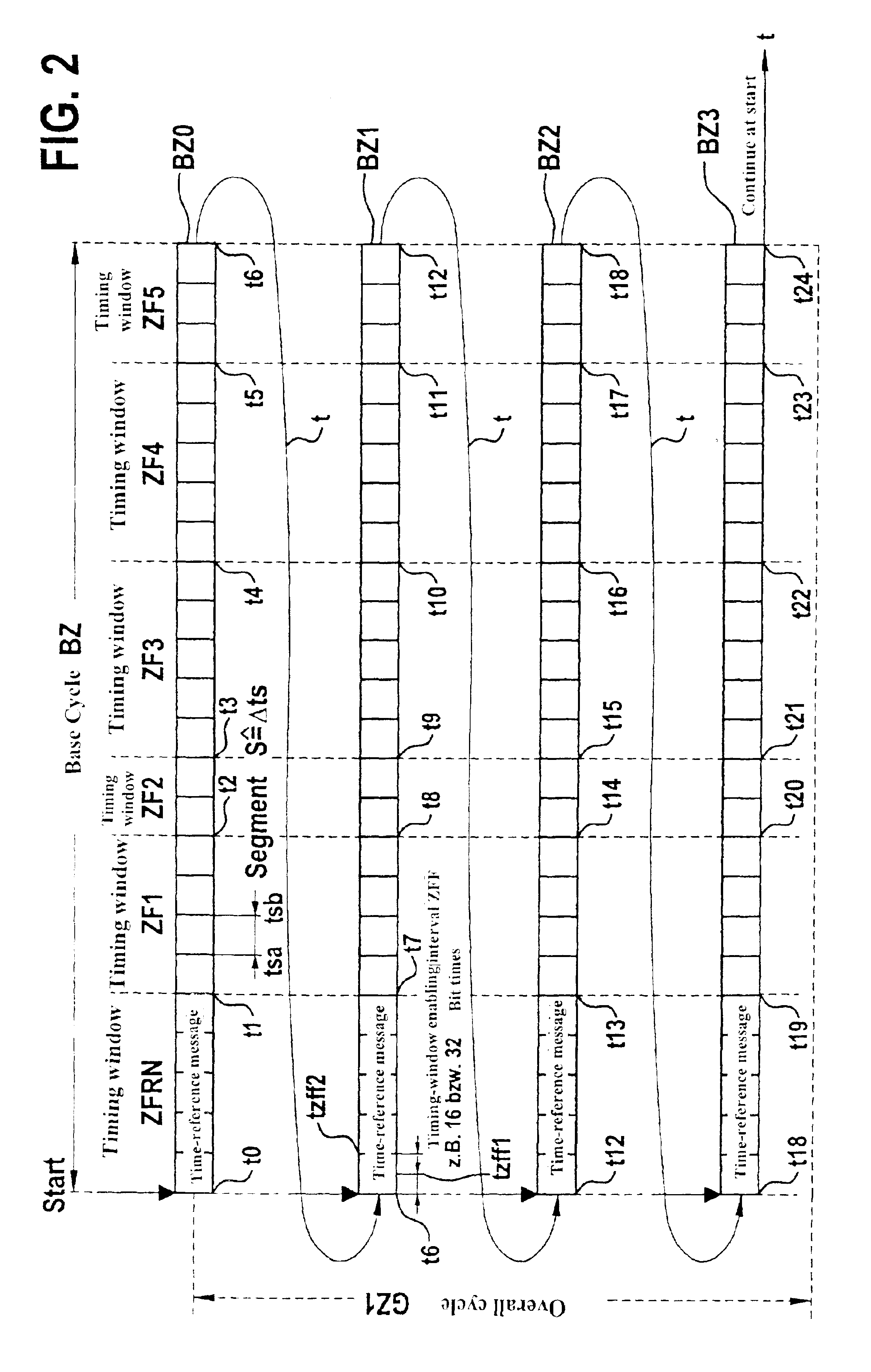Data exchange between users connected by a bus system and having separate time bases
a bus system and data exchange technology, applied in the field of data exchange, can solve the problems of reducing and related art being unable to deliver optimal, so as to achieve greater tolerance of accuracy and increase the efficiency of bus capacity utilization
- Summary
- Abstract
- Description
- Claims
- Application Information
AI Technical Summary
Benefits of technology
Problems solved by technology
Method used
Image
Examples
Embodiment Construction
[0027]TTCAN is based essentially on a time-controlled, periodic communication which is clocked by a timer (node, user) with the aid of a time-reference message, or reference message RN for short. The period up to the next reference message RN is denoted as base cycle and is subdivided into n timing windows (see FIG. 2). Each timing window allows the exclusive transmission of one periodic message of variable length. These periodic messages are transmitted in a TTCAN controller by using timing marks which are coupled to the expiration of a logical relative time. However, TTCAN also allows the consideration of vacant timing windows. These timing windows can be used for so-called spontaneous messages, the access within these timing windows to the bus being utilized via the arbitration scheme of CAN (arbitrating messages). The synchronization of the timer clock (global time gZ) with the internal local time of individual nodes lZ1 through lZ4 is taken into account and efficiently converte...
PUM
| Property | Measurement | Unit |
|---|---|---|
| Length | aaaaa | aaaaa |
| Time | aaaaa | aaaaa |
Abstract
Description
Claims
Application Information
 Login to View More
Login to View More - R&D
- Intellectual Property
- Life Sciences
- Materials
- Tech Scout
- Unparalleled Data Quality
- Higher Quality Content
- 60% Fewer Hallucinations
Browse by: Latest US Patents, China's latest patents, Technical Efficacy Thesaurus, Application Domain, Technology Topic, Popular Technical Reports.
© 2025 PatSnap. All rights reserved.Legal|Privacy policy|Modern Slavery Act Transparency Statement|Sitemap|About US| Contact US: help@patsnap.com



